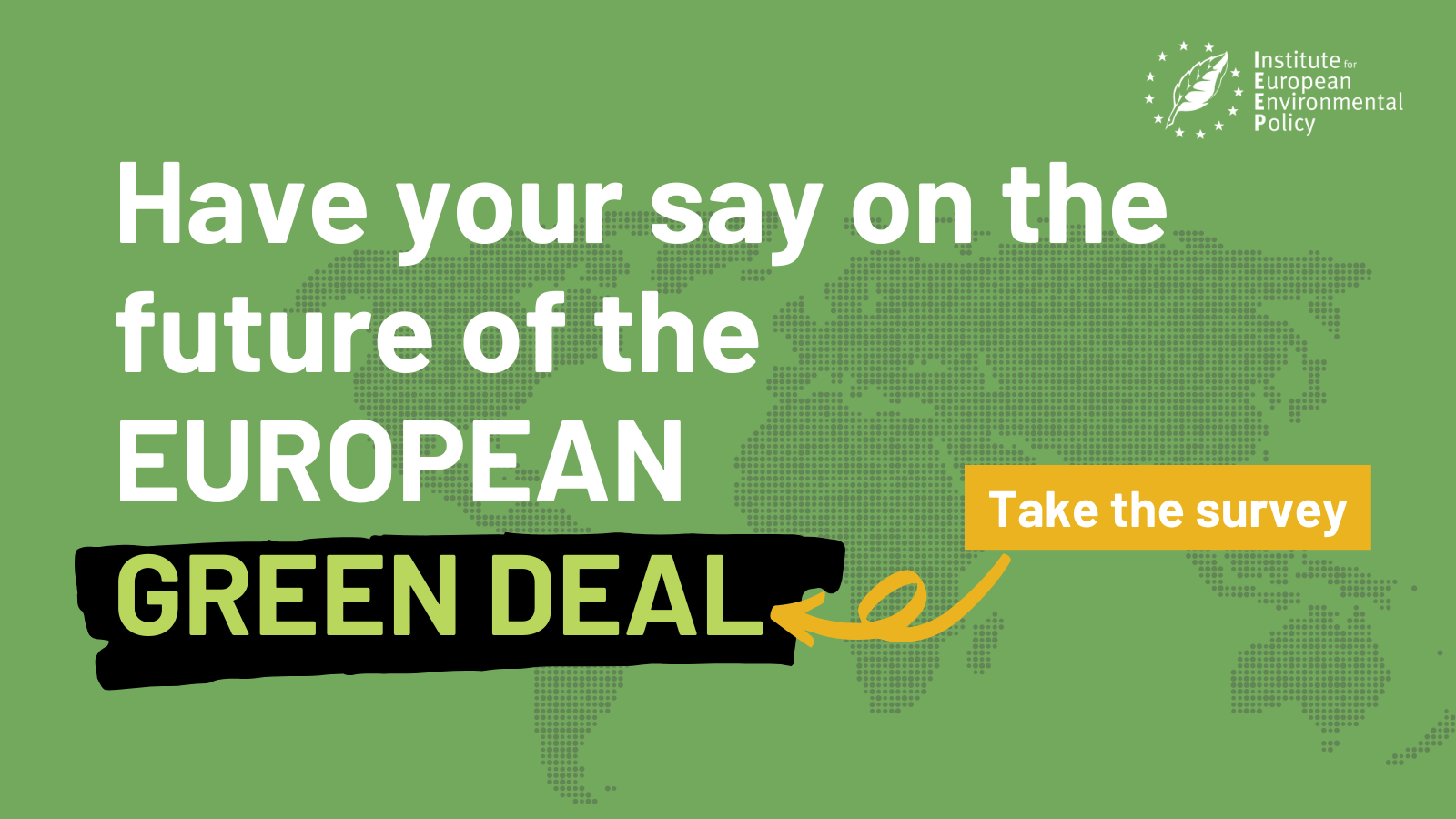AUTHORS: Nigel Dudley – Giulia Costa Domingo
What kind of information does the European Union need to get serious about implementing the Green New Deal? One critical aspect is finding out the impacts that its consumption and production is having on biodiversity, both at home and in other parts of the world: its biodiversity footprint.
As highlighted in the new EU biodiversity strategy, biodiversity footprints have great potential to support more biodiversity-friendly decision-making, and will be critical to implementing the post-2020 strategy of the Convention on Biological Diversity. They can be applied to a product, company, country, or trade flow; all suited for different purposes and with different data requirements.
A new IEEP paper – Biodiversity Footprints in Policy and Decision-making – explores the state-of-play of biodiversity footprint tools in the EU. It concludes that improving the collection and sharing of the data underpinning footprints is critical to their usefulness, and identifies data gaps as one of the largest challenges to be addressed. Teasing out the links in a biodiversity footprint is complicated. A cow grazing happily in a Dutch field will probably be eating supplementary winter feed containing soy beans. The feed company is likely to source from many places, depending on availability and cost. If any comes from soy plantations on recently cleared savannah in Brazil for instance, a glass of milk in Amsterdam may be contributing to destruction of the Cerrado, a threatened biodiversity hotspot. And, adding further complexity, “biodiversity” is often used as a fairly general term; the EU is also interested in the related concept of ecosystem services and measures of natural capital.
Many people and institutions are deeply engaged in these issues. Data needs were discussed in an IEEP expert workshop alongside practical steps the EU might take to increase generation and access to data useful for biodiversity footprints. We need to know two things: where products come from – the supply chain – and the status and trends of biodiversity in producer countries. This workshop focused on the latter. Some of the countries with the richest biodiversity are amongst the most data-poor, particularly in tropical rainforests. How can the EU help fill these information gaps, mitigate its own negative biodiversity footprint and enhance its positive one in the process?
There is no single answer. Some footprint methodologies rely on global biodiversity data sets, so collecting more data in one place will only be useful if it can improve information at a global level. Spatially explicit data sets are needed to improve footprints as highlighted by the Taskforce on Nature-related Financial Disclosures (TNFD), but some current footprint methodologies will not be able to use such data. So, alongside efforts to find out more about biodiversity, we may need to refine the methods used to convert this information into a footprint.
One obvious way to build a better bank of information is to increase sharing of existing data. Countries like Norway and France insist that information collected in Environmental Impact Assessments is shared. If this became required practice more widely it would make a huge improvement to information in centralised data stores like the Global Biodiversity Information Facility (GBIF), housed in Copenhagen, and in national footprints. The EU could help by creating the means for access to its own data more systematically, such as information from the Common Agricultural Policy. Horizon rules on data-sharing from EU-funded research already provide a positive model.
A logical next step is to encourage the inter-operability of biodiversity data, sharing data from GBIF, the UN’s System of Environmental-Economic Accounting (UN SEEA), and the EU’s data sets and investing in the standardisation of data recording. Integration of citizen science is increasingly important. The EU could help at every level through, for example, providing clear templates for data-sharing agreements that establish the conditions (including payments and restrictions on use and access) that allow data to be accessed fairly.
Then there are data gaps. Scientists know that the large majority of the world’s species remain unrecognised and unrecorded, time and money pressures mean that we need to be strategic in filling the gaps. Those countries that are biodiversity rich, data poor and major suppliers to the European Union would be an obvious place to start, with a focus on taxonomic groups that we know least about, like lower plants and invertebrates at risk due to activities in the value chains of EU trade. Identifying sectors and locations where detailed information is needed for risk reporting is a priority, for instance palm oil in Indonesia or soy in Brazil. Companies dealing in those commodities might be expected to take special care with sourcing and have particular interest in improved data.
There is a current opportunity, to work with the forthcoming Corporate Sustainability Reporting (CSR) Directive to strengthen and finesse requirements for biodiversity data provision from companies. At national level, the EU could work with member states and key supplier countries to improve the detail and quality of national footprints by improving spatial resolution within countries and providing more locally specific information; national averages are often of little use in determining local impacts.
There is also a need to refine footprint analyses. Facilitating a move from a narrow focus on amount of biodiversity lost (Mean Species Abundance) to the ecological importance of species, through strategic use of the IUCN Red List, Key Biodiversity Areas etc, would tell us more about what was happening in a particular operation. Encouraging inclusion of mitigation actions would improve the relevance of the analysis, including both positive and negative impacts on biodiversity.
The results will be written up, alongside IEEP’s Biodiversity Footprints in Policy and Decision-making, to help the EU as it implements next steps in its own efforts to improve data access for the Green Deal, through its ongoing development of the Green Deal Dataspace.
Photo by Coralie Meurice on Unsplash


